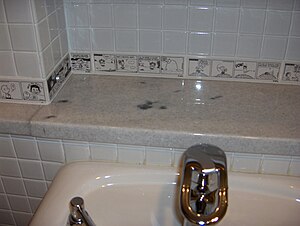
What’s a cat got to do with marketing strategies for your business?
You wouldn’t think cats and marketing would have much in common. Cats are, after all, famous for wanting what they want and being completely unfazed or bothered by what anyone else wants.
It turns out that’s not true. In fact, my cat, Paris, has some very definite ideas on the subject.
Meow! Meow!
When he wants something, he asks for it. He doesn’t think about it, wonder if it’s OK, or he’s causing too much bother. He just asks.
Lesson: if you want someone to do something, ask them.
Meowing, leg rubbing, jumping on the keyboard
If meowing doesn’t work, he tries rubbing against me, or jumping on the keyboard. If I ever type www1111111qqqqqq on this blog, you’ll know why. Use multiple methods to reach your prospects and interact with them. Some people prefer email, others like videos or podcasts.
Lesson: use more than one marketing tactic
Nap regularly
Take a break every once in a while. Look back at what you’ve done, and analyze what’s working. Especially if you’re a one-man (or woman) band, give your brain time to relax.
Lesson: you can’t be brilliant every day, all day
Feed me!
If he wants food, he’ll start meowing, then run right over to the food dish. It’s absolutely clear what he wants. Your instructions, and your marketing, should be clear too. Show people what you want them to do. If your search is broken, it’s hard to buy. If you can’t tell, have someone else test it. Use clear language too. If you don’t know your customers’ lingo, learn it – talk to them the way they talk, in terms they’ll understand (rank higher in Google, not WS3 compliant). As, you can see, Paris wants to reach Francophones.
Lesson: less friction means more sales
Squirrel!
It’s easy to get distracted when a squirrel crawls up the fire escape or a bird flies by. However, the cat is safely inside, and the squirrels are outside. No matter how hard he tries, he’ll never reach them through the double-paned windows. The latest trend or toy may work for you (or not). Don’t chase after it just because it’s new. Think about whether it fits into your business, your personality, and what your clients are doing.
Lesson: just because it’s bright and shiny doesn’t mean you should spend five hours a day on it
Create stories
Like most cats, Paris likes milk. He’s always trying to get at the little pitcher of milk for my morning tea. First, he jumped up on the desk, then he tried to put his nose in the pitcher. When it didn’t fit, he dipped his paw in the pitcher, tipped it over and lapped up the milk. Businesses need stories too. Show your personality in your writing and your marketing, rather than being a copycat (sorry, couldn’t resist).
(Note: he only did this once… and I let him because it was funny… once… now I put the milk where he can’t get it)
Lesson: say and do things that make you memorable
Plan your attack
If you see something you want to catch (a cat toy, a twist tie), approach it slowly. Calculate how far away it is, whether it’s likely to run, and the best angle of attack. If you’re marketing a product, make a plan. Put the cart and horse in the right order. Who will you approach? What will you do? How will you close the sale?
Lesson: know what you want and how to get it
Be picky
Cats are notoriously finicky. They’ll eat the stuff in the blue can, but not the green can. The pictures on the boxes both look fine to people, and the food does too. It’s the cat’s opinion that counts. When developing your marketing, pick a niche. Do what appeals to the people in that niche, not what appeals to everyone (or to you).
Lesson: market to your tribe (not everybody)
Photo credit: me





